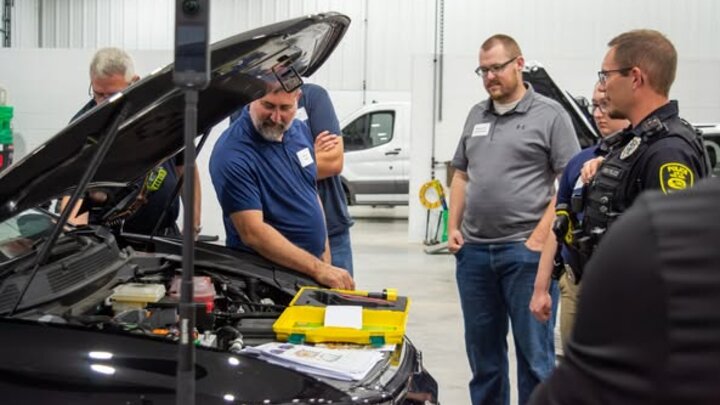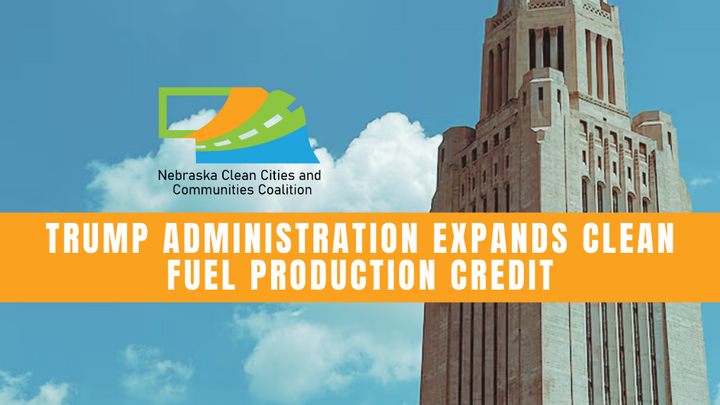The recent One Big Beautiful Bill Act is reshaping tax policy, infrastructure funding, and regulatory frameworks in ways that create unique opportunities for fleet managers looking to invest in cleaner, greener American-made electric and flex-fuel vehicles.
Here are four ways fleet operators can leverage the new law to accelerate their sustainability goals:
1. Leverage Temporary Tax Deductions on U.S.-Assembled Vehicles
The bill introduces a temporary tax deduction for auto loan interest on vehicles assembled in the United States, valid for purchases made between 2025 and 2028. For fleet operators with sustainability goals, this is an ideal window to transition more light- and medium-duty vehicles to electric vehicles (EVs) and flex-fuel models that run on domestically produced biofuels. Not only can this lower a fleet’s carbon footprint but pairing this deduction with existing federal and state incentives for EVs and alternative fuels can amplify cost savings and help fleets hit ESG targets faster.
Popular options include the Ford F-150 Lightning, E-Transit, Chevrolet Silverado EV, and E85-ready trucks from Michigan and Kentucky. Some fleets can also consider CNG, and propane conversions offered by approved upfitters.
2. Prepare for Infrastructure Upgrades That Support Clean Fleets
The legislation builds on efforts like the 2021 Infrastructure Investment and Jobs Act by funding:
- Expanding the National Electric Vehicle Infrastructure (NEVI) program, which aims to deploy at least 500,000 public EV chargers along key freight and passenger corridors nationwide. For fleet managers, this means new charging stations at predictable intervals, easing concerns about range and downtime.
- Modernizing aging roads and bridges, which helps reduce fuel waste and emissions by cutting congestion and minimizing detours and idling — critical for fleets that clock thousands of miles each month.
- Investing in smart logistics and digital freight technologies, similar to recent DOT pilot programs, which help optimize truck routing, reduce empty backhauls, and support more efficient multi-modal shipping.
- Providing grants to states and communities to develop alternative fuel corridors for E85, renewable diesel, compressed natural gas (CNG), and propane — giving fleets multiple options to diversify their fuel mix while supporting U.S. agriculture and biofuel production.
3. Stay Vigilant — Partner Locally When Federal Support Falls Short
While the bill includes regulatory rollbacks that may weaken federal environmental enforcement, sustainability-focused fleets shouldn’t see this as a reason to hit the brakes. Even if federal support stalls, local partnerships can keep your green goals on track.
Partner with local organizations like the Nebraska Clean Cities and Communities Coalition to tap into grants, pilot programs, bulk purchasing, and training that make clean vehicle rollouts smoother and more affordable. At the same time, take advantage of utility incentives that can cover part of the cost of installing EV charging infrastructure or offer lower overnight electricity rates for fleet charging. Together, these local and regional resources help fleets navigate shifting policies, cut costs, and keep their transition to low- and zero-emission vehicles financially viable and practical.
4. Factor Workforce Changes into a Resilient, Green Fleet Strategy
The One Big Beautiful Bill Act makes overtime pay and tip income permanently tax-free, giving drivers the chance to take home more pay — a welcome boost in a competitive labor market. However, the bill also reduces funding for Medicaid and Medicare, which could put health coverage at risk for some employees who rely on these programs. Higher pay doesn’t fully offset the risk if drivers lose access to essential health benefits or feel less secure about their families’ well-being.
Consider practical, sustainable strategies that could bridge this gap. A cleaner, more efficient fleet depends on a skilled, motivated workforce ready to handle new vehicle technology, safe charging procedures, and smarter driving practices:
- Offering safe-driving or fuel-efficiency bonuses for operators who meet idle-time or MPG goals — directly lowering fuel costs and emissions.
- Providing stipends for drivers and technicians to complete EV or alternative-fuel training, helping them adapt to new equipment and maintenance practices.
- Rewarding drivers willing to pilot new clean vehicles or test alternative fuel routes, which may require more planning and care.
- Adding retention incentives for drivers who commit to sustainability goals, like running designated low-emission routes or using new telematics tools that monitor efficiency.
While the One Big Beautiful Bill Act reshapes the policy landscape, the real power to build a greener fleet still lies with fleet managers themselves. By pairing new tax savings with strong local partnerships — like working with your regional Clean Cities coalition — smart infrastructure planning, and people-first workforce strategies, fleets can stay ahead of the curve and lead the way toward cleaner, more sustainable transportation in their communities.
Not connected to Clean Cities yet? Now is the time to reach out and get involved. Learn more about membership here.




